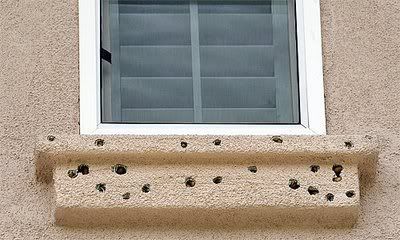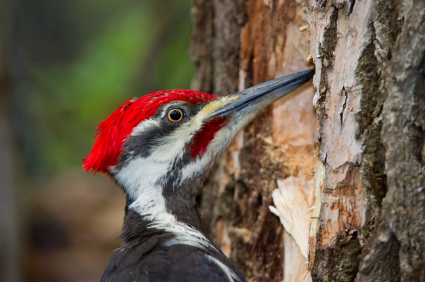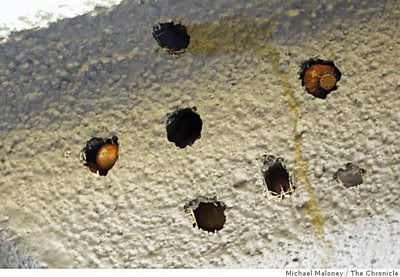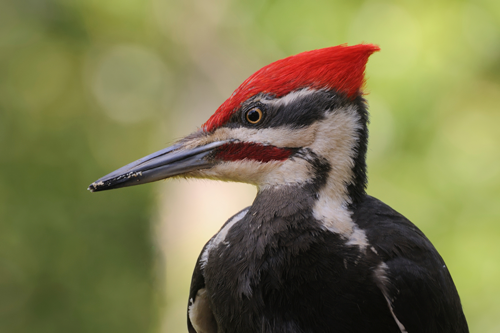
If you’re a homeowner in any area where there are trees, you’ve probably had problems with woodpeckers. They often drill nasty, gaping holes in your siding, fascia boards, EIFS, and those beautiful architectural elements created with foam.
The problem is compounded by the fact that woodpeckers are classified as migratory, non-game birds and are protected by the Federal Migratory Bird Treaty Act. So forget about poisons or pellet guns. Lethal controls or nest destruction can only be implemented with a special permit issued by the Law Enforcement Division of the US Fish and Wildlife Service, and after recommendation of USDA-APHIS-Wildlife Service’s personnel.So what can you do to protect your home from woodpecker damage? Fortunately, there’s a humane and highly effective woodpecker deterrent that’s recently been developed. It’s Called BeakGuard.BeakGuard WorksBeakGuard is a paint-on Woodpecker Deterrent that quickly conveys a warning signal to any woodpecker that may be tempted to start pecking on your home. The results are startling and virtually immediate. After two years of field testing in the most prolific woodpecker areas of the country including Montana, Colorado, South Dakota and Washington, BeakGuard scored a success rate that exceeded 90% in deterring further building damage. BeakGuard was tested on building structures experiencing ongoing woodpecker problems. In one test, a remodeled office building outside of Seattle, Washington with large EIFS cornices (coated foam insulation) was assaulted by woodpeckers every season. Some years the drumming resulted in more than 10 holes around the building—holes that eventually became nesting sites for smaller birds. The holes had to be filled with spray foam, sanded and refinished every year. After coating the building with BeakGuard, not a single woodpecker has damaged the building. BeakGuard is Easy to Apply Easily applied to latex painted surfaces, wood, fiber-cement, stucco, aluminum or vinyl, BeakGuard is an elastomeric acrylic. You can apply it with a brush, roller, paint pad or appropriate spray equipment. One gallon covers about 180 square feet. Thinning of the product is not recommended. BeakGuard should be screened prior to spray application, and the manufacturer recommends that you don’t thin the product. Back-roll BeakGuard when applying over acrylic finishes or other textured substrates. Depending on your climate, BeakGuard usually dries in just 24 hours. BeakGuard Won’t Harm BirdsBeakGuard uses a common compound that will not harm woodpeckers or any other bird species. In fact, the ingredients in BeakGuard are used in many consumer products on the market today. Products like nail biting and thumb sucking deterrents used to break children of these habits use this technology. BeakGuard Lasts and is Color FastBeakguard is specially engineered to leave a durable, long lasting finish. It resists dirt pick up and holds up to season after season of rough weather. It leaves a vapor permeable, flexible membrane that ensures the color won’t fade or change in tone.



